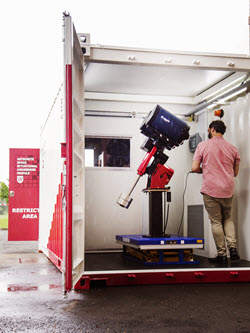Current Projects
As our world becomes more reliant on satellites, the potential for collisions between space objects is increasing. As a result, there is a critical need for accurate detection and tracking of satellites. Here at Western Sydney University, the International Centre for Neuromorphic Systems have developed a novel way to track space objects.

In this project, we are developing a novel bio-inspired acoustic sensing-processing system to detect koalas.

To develop hardware systems for processing data from Neuromorphic Vision Sensors.

To use machine learning to create automated systems that assess children's reading skills and provide personalised intervention strategies in real-time.

To produce a revolutionary new multi-sensory hive monitoring system that for the first time will provide beekeepers with real time information about where bees are foraging.

This project is exploring the observation of lightning with neuromorphic vision sensors, both terrestrially and from space, to provide complementary evidence to the current pool of lightning observations.

In this project, we are providing hardware solutions to the problem of security at the edge via the use of Neuromorphic Engineering.

Our lab is developing a host of neuromorphic audio-visual situational awareness systems for autonomous submersible and surface vessel for use by the Royal Australian Navy.

This project aims to design and implement an efficient hardware for a multi-layered self-trainable spiking neural network for real-time pattern detection.

To develop a proof-of-concept for a neuromorphic underwater audio-visual collision avoidance system for the autonomous or un-crewed underwater vehicles currently being developed by the Royal Australian Navy.

Developing an event-based visual situational awareness and anomaly detection system for UAVs, leveraging advanced sensing and modeling techniques to detect anomalies in real-time.




